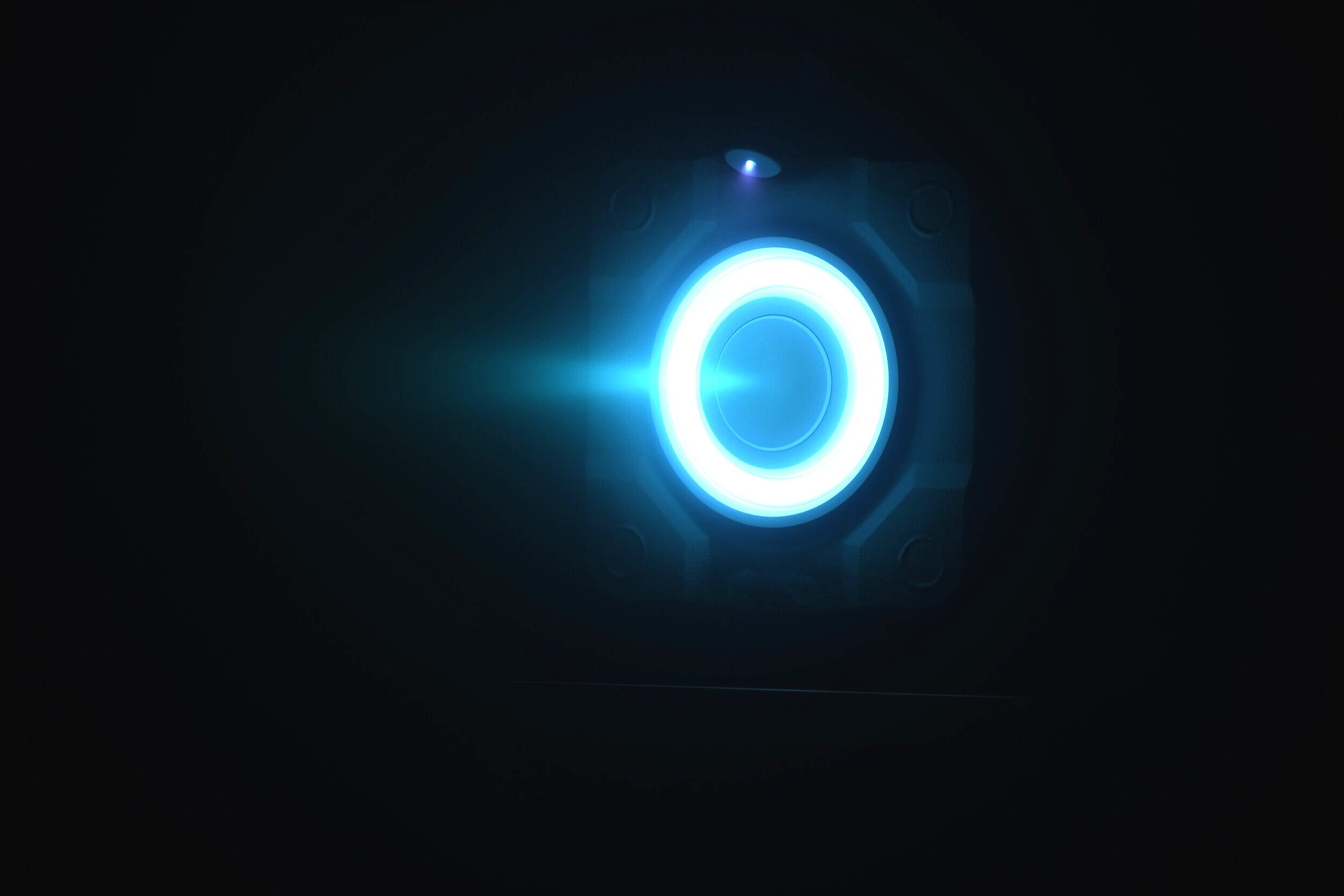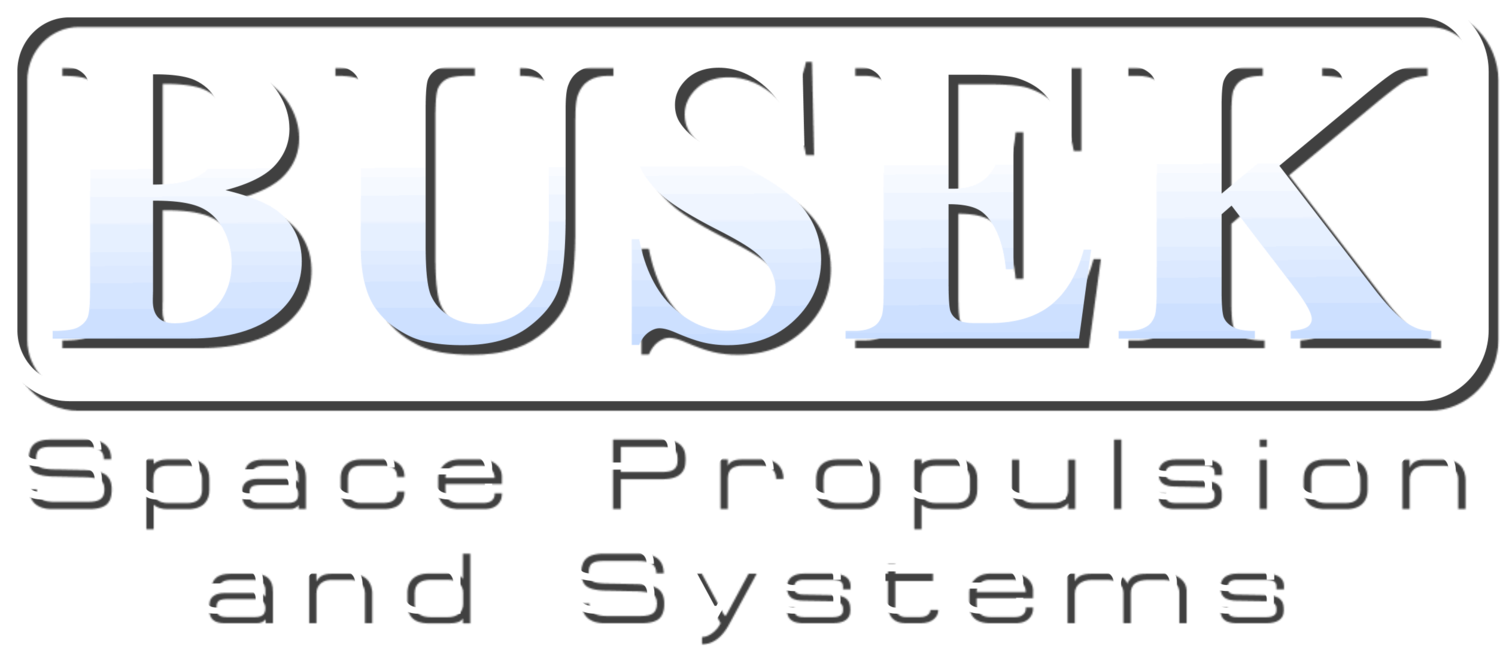
BHT-600
Best in-class performance. Life tested for >7000 hours.
High-performance and long life propulsion system designed for small satellites.
The BHT-600 is a mature propulsion system featuring high performance and compatibility with flight proven heritage components (cathodes, PPUs, and feed systems). The BHT-600 is especially well suited for ESPA-class spacecraft and offers high performance over long-life, as well as operation on xenon, iodine, or krypton propellants.
Available as a direct mount, with 1-axis gimballing, or 2-axis gimballing, the BHT-600 is perfect as primary propulsion. Gimballed assemblies provide attitude control for control wheel desaturation, reducing mass from having to carry a separate chemical attitude control system.
The BHT-600 has a long demonstrated lifetime and erosion modeling predicts a large portion of lifetime remaining past that for the thruster. This thruster has been extensively studied and modeled, and its design has proven to be extremely reliable and robust.
Nominal Discharge Power: 600W
Discharge Power Range: 300-800 W
Thrust: 39 mN (Xe)
Propellants: Xenon, Krypton, Iodine
Specific Impulse: Up to 1500 seconds
Demonstrated Impulse: 1.0 MN⋅s
Predicted Total Impulse: >1.5 MN⋅s
Extensively tested at NASA Glenn Research Center.
Concluding in March 2021, a BHT-600 engineering model at NASA’s Glenn Research Center accumulated 7,198 hours of operation (~70 kg Xe propellant throughput). Performance over this timeframe has not resulted in a discernable drop in thrust or specific impulse typically seen in other thruster designs. A hybrid BHT-600i (iodine anode, xenon cathode) has also been demonstrated for over one thousand hours of operation.
Complete Characterization.
With over 35 years of experience in propulsion systems, our thrusters provided experimental verification for leading edge Hall Thruster plasma physics codes. We pioneered many of the innovations that are now commonplace in the industry.
Busek has a long and rich history of contributing to plasma physics research, and it shows in the design choices we make to build thrusters with best in class performance.
The Whole Package
Busek provides the option of a complete and fully integrated Hall Effect thruster system with the BHT-600, including cathode, power processing unit, digital control unit, and propellant management systems.
Busek propulsion systems are composed of a combination of commercially sourced parts with long flight heritage and in-house produced assemblies and electronics, perfectly tuned to achieve maximum performance and lifetime from our Hall thrusters.
Publications:
Publications with Busek affiliated authors are marked in bold.
Szabo, J. J., Byrne, L., Strain, M., Paintal, S., Sawyer, S., Yu, T., Kolencik, G., Hruby, V., Gray, T. G., Petters, D. P., Haag, T. W., Mackey, J., and Taillefer, Z., “One Million Newton-Second Duration Test of a 600 Watt Hall Effect Thruster Fueled By Xenon,” AIAA Propulsion and Energy 2020 Forum, 2020.
Strange, N., Landau, D., Hofer, R., Snyder, J., Randolph, T., Campagnola, S., Szabo, J., and Pote, B., “Solar Electric Propulsion Gravity-Assist Tours for Jupiter Missions,” 2012 AIAA/AAS Astrodynamics Specialists Conference, Minneapolis, MN, August 13-16, 2012.
Hargus, W., Azarnia, G., Nakles, M. “A Comparison of Ion Acceleration Characteristics for Krypton and Xenon Propellants within a 600 W Hall Effect Thruster,” 48th AIAA/ASME/SAE/ASEE Joint Propulsion Conference & Exhibit, 2012, 10.2514/6.2012-3871
Colaprete, A, Andrews, D., Bellerose, J., Miotto, P., Genova, A., Foster, C. et al., NEA Close Rendezvous and Operations Satellite, Global Space Exploration Conference, Washington D.C., May 22-24 2012, abstract GLEX-2012.03.3.6x12599.
Bui, D. M., “Plume Characterization of Busek 600W Hall Thruster, MS Thesis, AFIT/GA/ENY/12-M05, March 2012.
Nakles., M. and Hargus, W., “Background Pressure Effects on Ion Velocity Distribution Within a Medium-Power Hall Thruster,” Journal of Propulsion and Power 2011 27:4, 737-743
Nakles., M. and Hargus, W., “Background Pressure Effects on Internal and Near-Field Ion Velocity Distribution of the BHT-600 Hall Thruster,”44th AIAA/ASME/SAE/ASEE Joint Propulsion Conference & Exhibit, 21 July 2008 - 23 July 2008.
Hargus, W., Nakles, M., Tedrake, R., Pote, B., “Effect of Anode Current Fluctuations on Ion Energy Distributions within a 600 W Hall Effect Thruster,” 44th AIAA/ASME/SAE/ASEE Joint Propulsion Conference & Exhibit, 2008, 10.2514/6.2008-4724
Matlock, T., Hargus, W., Larson, C., “Thermographic Characterization and Comparison of 200W and 600W Hall Thrusters,” 43rd AIAA/ASME/SAE/ASEE Joint Propulsion Conference & Exhibit, 2007, 10.2514/6.2007-5241
Victor, A., Zurbuchen, T., Gallimore, A., “Ion-Energy Plume Diagnostics on the BHT-600 Hall Thruster Cluster,” Journal of Propulsion and Power 2006 22:6, 1421-1424
Hargus, W., and Charles, C., “Near Plume laser Induced Fluorescence Velocity Measurements of a 600 W Hall Thruster,” 44th AIAA/ASME/SAE/ASEE Joint Propulsion Conference & Exhibit, 21 July 2008 - 23 July 2008
Cheng, S., and Martinez-Sanchez, M., “Hybrid Particle-in-Cell Erosion Modeling of Two Hall Thrusters,” Journal of Propulsion and Power 2008 24:5, 987-998
Lobbia, R., Gallimore, A., “A Method of Measuring Transient Plume Properties,” 44th AIAA/ASME/SAE/ASEE Joint Propulsion Conference & Exhibit, July 21 July 2008 - 23 July 2008
Lobbia, R., Gallimore, A., “Performance Measurements from a Cluster of Four Hall Thrusters,” IEPC-2007-177. 30th International Electric Propulsion Conference, Florence, Italy, Sep 17-20, 2007.
Eckholm, J., Hargus, W., Larson, C., Nakles, M., Reed, G. and Niemela, C., “Plume Characteristics of the Busek 600 W Hall Thruster,” 42nd AIAA/ASME/SAE/ASEE Joint Propulsion Conference & Exhibit, 2006, 10.2514/6.2006-4659
Lobbia, R., Gallimore, A., “Evaluation and Active Control of Clustered Hall Thruster Discharge Oscillations,” 41st AIAA/ASME/SAE/ASEE Joint Propulsion Conference & Exhibit. July 10 July 2005 - 13 July 2005.

See the rest of our selection
Interested in a different power envelope?
We have a thruster for every size spacecraft.




